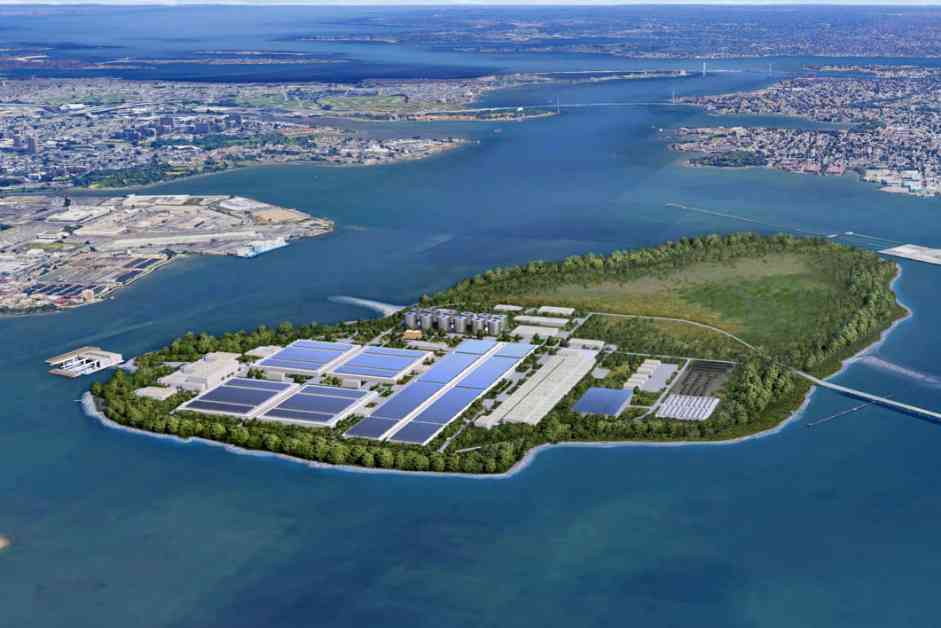City Council Pushes for Green Transformation of Rikers Island Amid Mayor Adams’ Delay
As the debate over the future of Rikers Island continues, City Council members are taking matters into their own hands by introducing legislation aimed at accelerating the conversion of the notorious island into a sustainable, green hub by the end of 2026. Spearheaded by Councilmembers Sandy Nurse and Lincoln Restler, the bill seeks to hold Mayor Eric Adams accountable for the implementation of renewable-energy plans that have been stalled since the previous administration.
The urgency behind this legislation stems from the city’s commitment to close the 10 jail facilities on Rikers Island by August 2027 and replace them with four new jails closer to courthouses in each borough, except Staten Island. However, Mayor Adams’ reluctance to fully embrace the renewable energy initiatives for the island has raised concerns about meeting the timeline set forth in the 2019 bill.
Despite the mandate to close the jails on Rikers Island, the construction of new facilities has faced delays under the current administration. The completion dates for the new jails in Downtown Brooklyn, The Bronx, and Queens have been pushed back to 2029, 2031, and 2032, respectively, according to Zachary Katznelson, executive director of the Independent Rikers Commission. Additionally, the timeline for a new jail in lower Manhattan remains uncertain as City Hall grapples with finding a design firm.
Amid the delays in the closure of Rikers Island jails, concerns have also been raised about the impact on neighboring communities. Chung Pak, a low-income senior residence in Manhattan located near the former jail known as The Tombs, has shown signs of structural damage during the demolition process. The safety of residents and the surrounding infrastructure are critical considerations as the city navigates the transition away from Rikers Island.
While the Renewable Rikers Act signed by former Mayor Bill de Blasio in 2021 laid the groundwork for exploring renewable energy options on the island, it did not mandate the specific use of the land for green initiatives. This ambiguity has led to a range of proposals for the 413-acre island, including affordable housing, a large park, and even an expanded runway for LaGuardia Airport, as suggested by former Gov. Andrew Cuomo.
Councilmember Sandy Nurse, chair of the City Council Committee on Criminal Justice, is determined to steer the conversation towards a definitive plan for Renewable Rikers. She emphasizes the importance of prioritizing renewable energy infrastructure over housing developments on the island, citing public health concerns and the need for sustainable solutions.
In a bold move to drive progress on the Renewable Rikers initiative, Nurse plans to introduce a bill that would require city officials to develop a comprehensive master plan for the island’s green transformation. The plan would outline the construction of essential components such as a wastewater treatment plant, renewable energy generation and storage facilities, and off-shore converter stations, with cost estimates and timelines for each project.
The proposed legislation has garnered support from environmental activists who view it as a crucial step towards realizing the vision of Renewable Rikers as a model of environmental progress, green job creation, and social justice. Eric Goldstein, a senior attorney for the Natural Resources Defense Council, applauds the initiative for its potential to drive sustainable development on the island.
However, the success of the Renewable Rikers plan hinges on the city’s ability to reduce the jail population to around 4,200 individuals, a significant challenge given the current population of 6,525 as of September 10. Mayor Adams’ administration has faced criticism for failing to transfer unused jail facilities to the Department of Citywide Administrative Services as mandated by the law, further complicating the closure process.
Despite the setbacks and delays, Councilmember Nurse remains optimistic about the impact of the master plan bill on advancing the Renewable Rikers agenda. With the potential to supercharge the initiative and provide a clear roadmap for the island’s future, the legislation represents a crucial turning point in the ongoing debate over the fate of Rikers Island.
In conclusion, the push for green initiatives on Rikers Island underscores the city’s commitment to sustainability and environmental stewardship in the face of complex challenges. By prioritizing renewable energy infrastructure and community well-being, city officials aim to transform a former site of incarceration into a beacon of progress and innovation for future generations.
